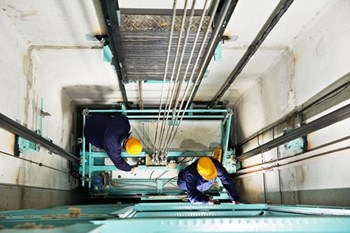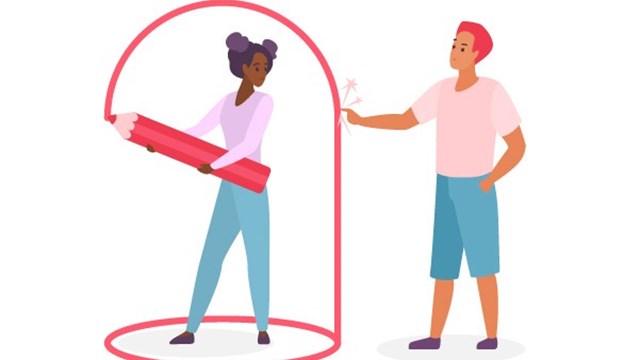
No matter how well constructed and carefully maintained, no mechanical system lasts forever—and that goes for elevator cabs and equipment just as much as it applies to roofs or boilers. At some point, your building’s vertical transportation comes to the end of its useful life, and the inconvenience of refurbishment and replacement becomes a reality for residents. If you live on a lower floor—say the first, second, or even the third story—the inconvenience may not be too severe. If you live in a building with multiple elevators, it’s unlikely that more than one will be taken out of service for upgrading at a time. But if you live in a building with a single elevator and reside above the first few floors, or if you have trouble climbing stairs at all, let alone carrying packages up or down, an elevator upgrade can become a real nightmare.
“Single-elevator buildings are a challenge,” says Joe Caracoppa, an elevator consultant with Sierra Consulting Group, a New York City–based elevator consulting firm. “The question is: how do you get the people up and down for six to eight weeks while the work is being done and completed? [The answer] is usually walking up and down. When the elevator is out, it’s out. It can’t be used temporarily.” On the other hand, Caracoppa continues, “Multi-elevator buildings are easy. You always have another car—a freight car or the other passenger elevator. But if it’s just a single elevator, well, no one can use the elevator during the process, and it must be tested by the city before it can be put back into operation.”
Planning for the Inevitable
Jacqueline Duggin is a building manager with Gumley-Haft, a Manhattan-based residential property management firm. She manages a seven-story single-elevator building on Manhattan’s East Side that recently underwent a total refurbishment. The property was built at the turn of the twentieth century, and so is over 100 years old. The single elevator required modernization and refurbishing. “The board really had to think a lot about the project, and about this problem,” Duggin says. “We had people in the building, one family in particular, where someone was disabled and used a wheelchair. There was no way this resident could go up and down the stairs. Another resident had two very large dogs, and they couldn’t go up and down numerous times a day either. There was no way we could accommodate them. In the end, the board did arrange to do the work during the summer months when many people were away on vacation. The resident with the dogs had a summer home and went there for the duration of the project. The disabled resident stayed with a family member elsewhere. For other residents who were able to go up and down the stairs, we accommodated them by hiring extra staff to help people with their groceries, luggage, etc. We placed chairs on each landing and provided cold bottles of water for anyone who was tired or overheated.”
Another example of community outreach during an elevator upgrade played out at a close-knit mid-size co-op in Upper Manhattan’s Hudson Heights neighborhood. Built in 1939, the 56-unit building has only one elevator. The cab and equipment were completely refurbished a few years back, presenting the co-op community with a unique set of challenges. The building was home to about a half-dozen residents who were past 90 years of age—all living above the fourth floor. Hope Kaye has been a resident of the co-op for 15 years and says that most of the elders were former refugees from Eastern Europe during World War II, and as such were perhaps less likely to ask for help than others might be. According to Kaye, those who had children didn’t have them living close by. In order to support and assist their neighbors, the community was proactive.
“One unique aspect of the problem was that these six elderly shareholders took their lunch every day at a senior center around the corner at a synagogue social program,” Kaye explains. “Their social lives required them to leave the building daily. So we set up a protocol to help them without asking them if they needed help. We placed folding chairs on each landing to provide a ‘rest stop’ after each flight of stairs. We also organized a program to check in on them and offered to do their errands—things like food shopping, picking up dry cleaning, etc. that they might not be comfortable asking a neighbor to do. For those who wanted to do their own shopping, we had the super and residents who were home during the day on lookout to help them carry their bags up the stairs. We did a similar thing with garbage disposal. All garbage must be sorted for recycling, and so had to be carried down to the first-floor collection area, because the building’s garbage chute was sealed up years ago. We made sure that when we took down our garbage, we took down theirs, too.”
Kaye says the elevator project took approximately six weeks. “If anything,” she says, “the project and the way we handled it brought us closer as a community.”
Another important consideration when it comes to navigating a major elevator project is to enforce the timeframe and schedule set out by the elevator contractor in their refurbishment or replacement contract. According to Duggin, “The contract the building signs with the company doing the work will contain a clause specifying a timeline and completion date. If that timeline and date are not met, the contract will contain penalties.” While delays in any type of construction work are typical, when it comes to something as crucial to the community as elevator work, both the board of directors and management need to stay on top of the situation to minimize the inevitable disruption.
The Legal Angle
What are the real liabilities a co-op or condo board should consider before proceeding with an elevator project? Attorney Michael C. Kim, principal at Michael C. Kim & Associates in Chicago, says that “In general, the association would not be responsible for providing disabled occupants with alternative housing or compensate/reimburse them for such expense. Elevators may require repair, or even replacement at some point in time. Having one elevator is an obvious condition of the property, and if that elevator is out of service for whatever reason and for whatever length of time, that is a potential situation that owners and residents need to take into account. While the association cannot wrongfully interfere with an owner or resident’s access to their unit, the association cannot and does not unconditionally guarantee access. The best course of action is to give as much notice as possible of the modernization project and its effects on access, so as to allow the disabled residents to make alternative living arrangements, such as staying with relatives or renting temporary quarters. Providing access essentially deals with keeping the existing structure and services in good repair and does not require the providing of additional services which would extend beyond that basic function or obligation.
“Having said that,” Kim continues, “as a practical, political, and neighborly service, some associations will identify and even make arrangements with buildings or other facilities in the neighborhood, sometimes with special rates arranged, to lessen the inconvenience to the affected residents, however, providing and paying for complete alternative living quarters would be unusual in my experience.”
Mark Hakim is a co-op attorney with Schwartz Sladkus Reich Greenberg & Sladkus, a law firm based in New York City. “Under the New York City Human Rights Law, the Federal Fair Housing Act, and the New York State Human Rights Law,” reasonable accommodations in housing must be made to those living with legally defined disabilities. The accommodations to be made should be such that the disabled person can enjoy the use of his or her apartment in the same fashion that someone who is not disabled can. In addition, in a co-op building where there is a landlord/tenant relationship, while the board (comparable in this case to a landlord) is entitled to shut down the elevator to make the repairs/replacements, depending on the terms of the proprietary lease, that shutdown may entitle the shareholders (in this case comparable to tenants) to make a claim for abatement of their maintenance.” In other words, if a shareholder can’t make full use of their apartment because of an elevator shutdown—no matter how necessary that shutdown may be—they may be able to argue successfully for suspending their monthly maintenance until the lift is back up and running.
Hakim cautions that notice should be sent to every resident of a building when an elevator shutdown is planned, and that management should make inquiries to determine which residents may need assistance. However, it is generally the responsibility of the disabled shareholder or unit owner to notify the management or board and request a reasonable accommodation to be made.
When it comes to something as crucial—and as potentially disruptive—as a major elevator repair/replacement project, co-op and condominium boards should be proactive and communicative. They should reach out to all the occupants and determine who, if anyone, will need accommodations and how those can be reasonably made. Open a dialogue with all, and do not ignore the issue until it is too late. It’s always better to be communicative and proactive, rather than tight-lipped and reactive. Each board should understand and expect that there may be requests for accommodations and should be, at all times before, during, and after the bid process and during the pendency of the work, ready to assist and respond to reasonable requests.
A J Sidransky is a staff writer/reporter with The Chicagoland Cooperator and a published novelist.






Leave a Comment